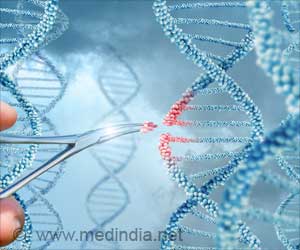Scientists from Spanish National Cancer Research Centre have developed a method by which biological crystals are produced that help scientists to observe, for the first time, DNA double chain breaks

DNA breaks occur in several natural processes that are vital for life: mutagenesis, synthesis, recombination and repair. In the molecular biology field, they can also be generated synthetically. Once the exact mechanism that produces these breaks has been uncovered, this knowledge can be used in multiple biotechnological applications: from the correction of mutations to treat rare and genetic diseases, to the development of genetically modified organisms.
A SLOW-MOTION REACTION:
Enzymes are highly specialised dynamic systems. Their nicking function could be compared, said Montoya, to a specially designed fabric-cutting machine that "it would only make a cut when a piece of clothing with a specific combination of colours passed under the blade."
In this case, researchers concentrated on observing the conformational changes that occurred in the I-Dmol active site; the area that contains the amino acids that act as a blade and produces DNA breaks.
"By introducing a magnesium cation we were able to trigger the enzyme reaction and subsequently to produce biological crystals and freeze them at 200°C", said Montoya. "In that way, we were able to collect up to 185 crystal structures that represent all of the conformational changes taking place at each step of the reaction."
Advertisement
Advertisement












